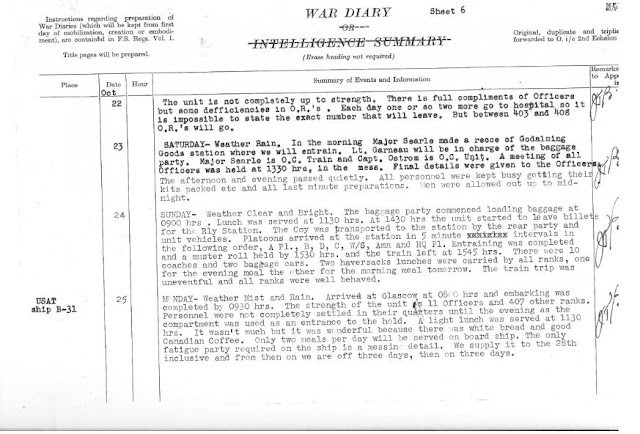52 Ancestors in 52 Weeks
Week 47
Prompt - Thankful
I sent my sample of DNA in on October
31st. It seemed like a great day to commit to bringing
forward my long lost dead relatives. It was suppose to be 6 to 8
weeks before I received any results. On this past Wednesday,
November 21 – just 3 weeks after that, I got my results.
I am definitely in over my head. It is
much more complicated than I expected. I think it will be a steep
learning curve.
The results are interesting. My DNA
shows I am 54% Germanic Europe and 46% England, Wales and
Northwestern Europe. That kind of aligns with my research. The Krikaus and
The Peters moved to Canada from Russian areas inhabited by displaced
Germans. The other 46% is likely due to the migration of peoples.
The surprising thing is that there is no mention of Irish DNA! As a
reminder my maternal grandfather, who seems to be a mystery in my
family, is a supposed to be Irish. Robert Windsworth Sullivan states
on his marriage certificate to my grandmother that his mother and
father were born in Dublin, Ireland. This is where I am suppose to
say the plot thickens on this mysterious fellow with a shady
background.
But first I decide to look at Ancestry
to see if it has any sage wisdom on this missing ethnic group. There in the first topic of DNA is
this; “ Unexpected Ethnicity Results”. I begin reading and re
reading. It hops right into genes, chromosomes and how it is passed
down. Each person usually has 23 pairs of chromosomes of which one
of the pair comes from your mother and the other from your father. I
will use the very useful Ancestry analogy to explain how it is
possible to not inherit a certain ethnicity.
Because we scoop whole jellybeans without cutting them in half, it’s possible that your father has red, blue, green, yellow, purple, grey, turquoise, and orange jellybeans, but that your scoops don’t have any red jellybeans from your dad’s side. This doesn’t mean that you didn’t descend from a red jellybean dad; it means only that you didn’t inherit any of your dad’s red jellybeans.”
Now think of one's siblings. Each of us would receive 50% of our DNA from our parents however due to its randomness it is likely that my siblings could inherit some of those red jellybeans that I did not.
I am not quite ready to hang up my shamrock just yet. It has however given me pause to think that maybe like so much else in my maternal grandfather's life, his Irish background is bogus.
This is just the tip of the iceberg in my results. Within 12 hours of getting my results I had a request from someone asking me if I was their second cousin as their DNA suggested and they shared their information. As of now I can't find the connection. Further I have 1 matched DNA hint and a 1000 + hints of 4th Cousins or closer.
There is no doubt that this is going to be more work as I try to understand all aspects of it and as I try to understand what my relationships to a 1000 + more individuals. I am thankful that I am retired and can spend the time reading up on this. Anyone have a DNA genealogy book for Dummies? I might need one. It is just one more tool in my toolbox to figure out who my family might be.
Wendy






















